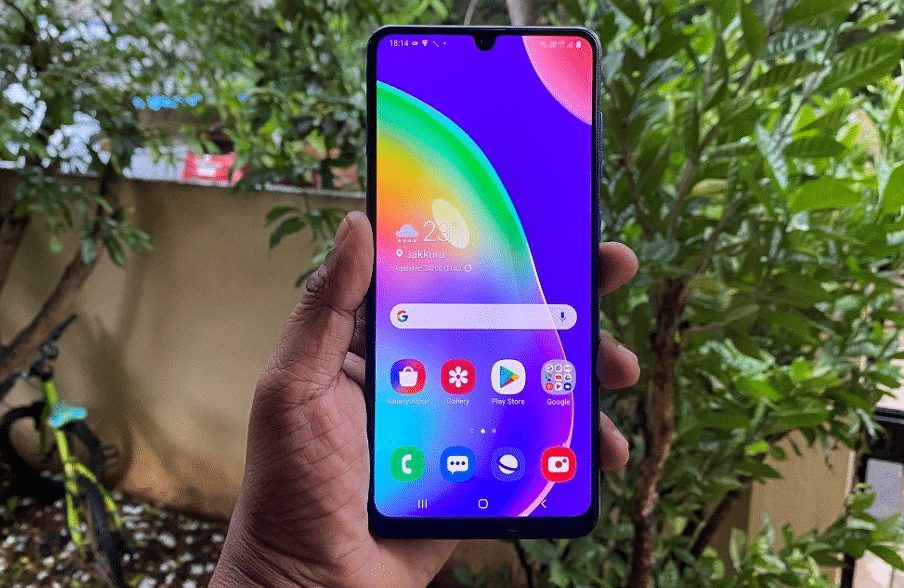
Counterpoint Research stated in a report on Friday (July 24) that smartphone shipments in India declined by massive 51-percent year-over-year (YoY) to just over 1.8 crore units in the second quarter of 2020 due to the coronavirus-led lockdown.
However, in June 2020, Indian smartphone shipments registered just 0.3% Year-on-Year decline, as there was pent-up demand after the announcement of ease of lockdown and advertisements from the brand also helped increasing the sales. During the quarter the unique smartphone userbase surpassed 500 million.
“The COVID-19 pandemic wiped-out almost 40 days of production as well as the sales of smartphones due to the nation-wide lockdown. During May, the government allowed shops to open and online channel deliveries for non-essential items. As a result, the market witnessed a surge in sales as the lockdown restrictions were slowly lifted. The quarter was thus marred by both demand and supply constraints which led OEMs to rethink their go-to-market strategies. On the supply side, the factories were shut down in April and started operating in May, which resulted in supply shortages for some manufacturers. Some brands maintained the supply of their products by importing fully assembled handsets. Additionally, the last week of the quarter saw components being held up at customs, which also impacted the supply chain,” said Prachir Singh, Senior Research Analyst at Counterpoint Research.
With Xiaomi leading the Indian smartphone market with a 29% shipment share, online channel shares are at their peak, contributing almost 45% of all sales. Samsung bagged second place in the market for smartphone demand, with the fastest recovery rate, coming in at 26%, its highest shipment share in the past two years.
Providing insight on how the pandemic has altered the competitive landscape, Shilpi Jain, Research Analyst at Counterpoint Research, noted, “The contribution of Chinese brands fell to 72% in Q2 2020 from 81% in Q1 2020. This was mainly due to the mixture of stuttering supply for some major Chinese brands such as OPPO, Vivo and Realme, and growing anti-China sentiment that was compounded by stringent actions taken by the government to ban more than 50 apps of Chinese origin and delay the import of goods from China amid extra scrutiny. This all resulted from the India-China border dispute during June.”
“However, local manufacturing, R&D operations, attractive value-for-money offerings and strong channel entrenchment by Chinese brands leaves very few options for consumers to choose from. Additionally, in the era of globalization, it is difficult to label a product based on country of origin as components are being sourced from many different countries. This development has given a window of opportunity for brands like Samsung and local Indian brands such as Micromax and Lava, to recapture market share. Further, Jio-Google’s partnership to bring a highly affordable 4G Android smartphones could also gain ground, banking on the growing #VocalforLocal sentiment,” Jain added.
Xiaomi models like Redmi 8A dual, Redmi Note 8 Pro, and Redmi Note 8 are currently consumer favourites.
Samsung, which is currently right behind Xiaomi in terms of market sales, has increased its share from 26% from last quarter’s share of only 16%. The first brand to reach almost full (94-percent) manufacturing capacity by the end of June, the company has revamped the M-series and launched it in offline channels together with new schemes like Samsung Care+ to help the brand to further restore its position in the Indian market.
Vivo has also handled the post-lockdown demand fairly well as it exited the quarter with 60% pre-COVID levels. The launch of its flagship V19 and the release of new smartphones like Y50 and Y30 to its Y-series line has given the company sales a significant boost.
Realme came in at the fourth place, with an 11% decline in shares as the factory was shut down through most of May due to manufacturing constraints. However, the company’s newly launched Narzo series was enough to make up for the loss faced.
Oppo was another brand that struggled due to supply constraints. Regardless, the company managed to gain mind share by entering the ultra-premium segment (>INR 45000 ~ $600) with the launch of its 5G flagship, Find X2 series and attractive hearables line-up.
OnePlus managed to take back its place in the premium market (>INR 30000 ~$398) with its fresh release, the OnePlus 8 series, while Apple took top post in the ultra-premium segment (>INR 45000 ~ $600), with iPhone 11 shipments, though it fell slightly to OnePlus in the initial stages of Q2.
On the other hand, Apple managed to remain the leading brand in the ultra-premium segment (>INR 45000 ~ $600) driven by iPhone 11 shipments, though it lost some share to OnePlus in Q2, Counterpoint's report said.
According to statistics and market analysis and the current rate of sales, India is set on the path to becoming the next biggest market for smartphone purchase and manufacturing.
Get the latest news on new launches, gadget reviews, apps, cyber security, and more on personal technology only on DH Tech.